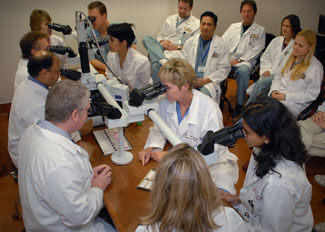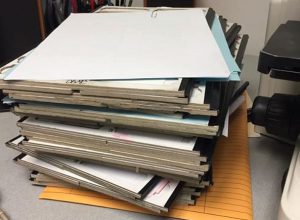Will Cancer Still Be a Surgical Disease in 2027?
As we get ready to flip the calendars over to 2017, a year that seems almost made up from the time I was about 10 in 1980 thinking wasn’t even a real number. By now we were supposed to be flying around in our transport pods with flux capacitors, without roads, carrying light sabers perhaps to settle disputes. By 2020 in grade school we thought no one would smoke, eat unhealthy, get cancer or die before 100 and only in a light saber dispute, not from “natural” causes such as heart disease, cancer, respiratory disease, kidney disease or diabetes. There was going to be world peace and an end to world hunger since we figured out how to grow enough food and transport it anywhere in the world without difficulty.
Cancer will surpass heart disease as the #1 cause of death in this country. Survive your heart attack, lower your cholesterol, eat your vegetables, lay off the fats and cigarettes, exercise and you can live long enough to get multiple myeloma or leukemia or lymphoma.
With the exception of those “-emias” and those “-omas” – the other “-omas” – carcinoma, sarcoma and melanoma remain a surgical disease as first-line therapy. Sure we have adjuvant chemotherapy or adjuvant chemotherapy and radiation therapy, if only to shrink the tumor before cutting it out. Or “chemo and XRT” following surgery, but the surgery is still there. Steel scalpels, bright lights and lots of electrocautery. In medical school the mantra was “cold steel will heal”.
With all the exciting developments in immunotherapies, enabling the patient’s own immune system, defense mechanism if you will, to help kill tumor cells without a lot of collateral damage to non-tumor cells as with “traditional chemotherapy” there is hope we can not only treat but cure using non-surgical, non-chemotherapy, non-radiotherapy techniques.
I had an interesting discussion with a group of surgeons the other day. We are all about the same age, having finished training about the same time. Some of the surgeons can trace their mentors back to some of the surgical giants, such as Halsted himself, William Stewart Halsted, one of the “Big Four” founding professors at Johns Hopkins Hospital. He is credited with starting the first surgical residency training program in the US, many pioneering surgical and operating room policies including use of latex surgical gloves. He also performed the first radical mastectomy for breast cancer in 1882. We have seen the rise and fall of the radical mastectomy and perhaps another rise. Anyways, as surgeons are surgeons, they do not let skin get in their way of making a diagnosis or taking it out and this group of surgeons is no different – cold steel will heal.
 However, it seems to some of them now that in 10 years time, some cancers will not be surgical diseases – breast among them but perhaps colon, lung or melanoma. As their livelihood in part depends upon cutting out tumors between gallbladders, appendixes and hernias, they see cancer, even “local tumors”, not systemic disorders such as leukemia or lymphoma, becoming increasingly a “medical” disease rather than a “surgical” one. They reference “breast conservation” rather than removal of all the potentially harmful breast tissue (this is a dynamic area of debate though and even surgeons in a single institution may not agree on this). They point to biopsy versus dissection, increasing EBUS and EUS-guided biopsies for diagnosis rather than open biopsies as I saw as a medical student. And reference oral chemotherapies and immunotherapies only getting better that will eliminate tumors rather than preventing recurrence after local control.
However, it seems to some of them now that in 10 years time, some cancers will not be surgical diseases – breast among them but perhaps colon, lung or melanoma. As their livelihood in part depends upon cutting out tumors between gallbladders, appendixes and hernias, they see cancer, even “local tumors”, not systemic disorders such as leukemia or lymphoma, becoming increasingly a “medical” disease rather than a “surgical” one. They reference “breast conservation” rather than removal of all the potentially harmful breast tissue (this is a dynamic area of debate though and even surgeons in a single institution may not agree on this). They point to biopsy versus dissection, increasing EBUS and EUS-guided biopsies for diagnosis rather than open biopsies as I saw as a medical student. And reference oral chemotherapies and immunotherapies only getting better that will eliminate tumors rather than preventing recurrence after local control.
I am concerned about liquid biopsies and non-invasive tests for lung and colon cancer that will replace tissue as a means of diagnosis in the future. Less invasive is better unless you are a biopsy. Or your business is dependent on those biopsies. Might be time to open a liquid biopsy lab and get proficient at techniques in blood and urine for diagnosing, grading, staging and assessing response to therapy rather than using primitive techniques such as biopsy and tissue conserving surgical procedures.
Certainly 2027 will be different for all of us, whether we are getting the tissue out of a patient or responsible for taking it out of a bucket of formalin and reporting the microscopic features that will guide the therapy – be it additional surgery, chemotherapy or immunotherapy.
Heck, 2022 will look different but I think it is too early to sell your stock in surgical blades, paraffin, glass slides or coverslips.
 I think cancer will remain a surgical disease. And surgical pathologists will still be a part of that process. Along with liquid tissue biopsies for response to therapy, recurrence and necessity to alter therapies. But for now and for the next 10 years I think cold steel, bright lights and formalin will be standard of care in oncology for appropriate treatment, grading and staging.
I think cancer will remain a surgical disease. And surgical pathologists will still be a part of that process. Along with liquid tissue biopsies for response to therapy, recurrence and necessity to alter therapies. But for now and for the next 10 years I think cold steel, bright lights and formalin will be standard of care in oncology for appropriate treatment, grading and staging.
The disputes will remain about margins, number of lymph nodes collected versus reported, depth of invasion and the like but for that the surgeons and pathologists can use their light sabers to settle the matter.
































